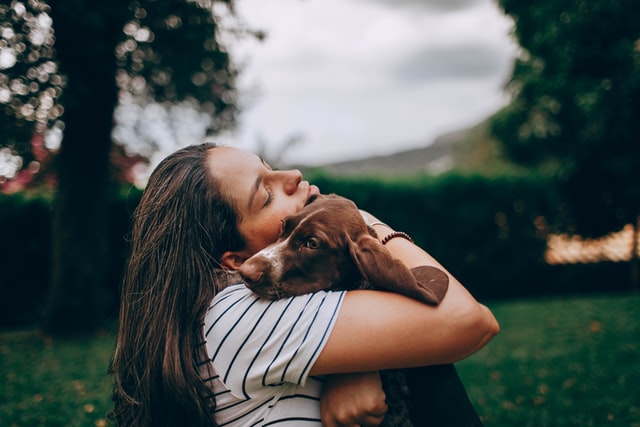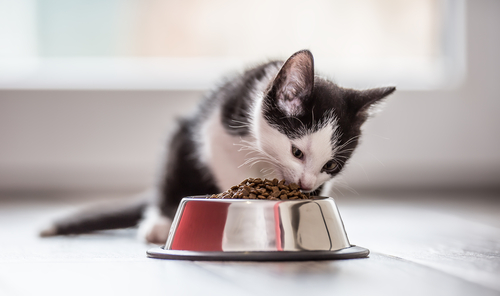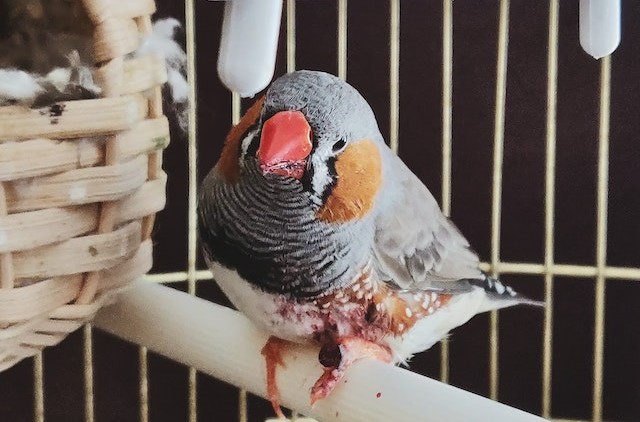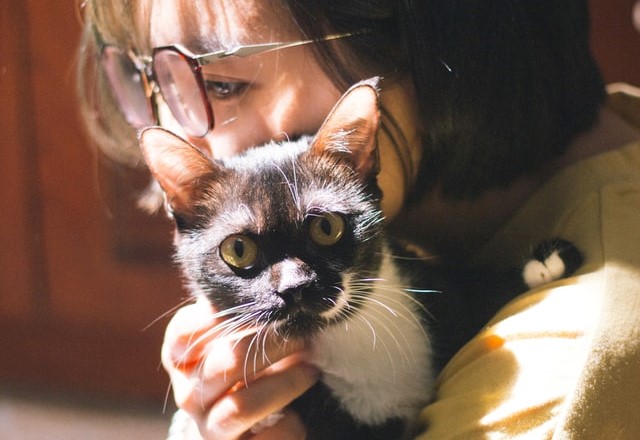Pet safety during pest control is a must – it’s something you absolutely have to practice. Your customers’ pets are their loved ones and, as a trusted service provider, you have an obligation to do the best thing by them too. After all, getting rid of pests while keeping everyone in the family safe is about doing your job properly. On top of that it’s also about building a good reputation for your business, now and into the future.
Consider that a possible customer could be anxious about booking a pest controller. They might have concerns and want to know how to keep their pets safe during the pest treatment process. Thankfully you can put your customer’s mind at ease by taking them through the steps for pet safety during pest control. Although this is achieved by working together, you are the one with pest control knowledge. When it comes to keeping pets safe, share what you know with your customer to build their trust and ensure your success.
Here are some top tips for sharing with customers your expertise on pet safety during pest control. They and their pets will thank you for it.
Communication is crucial for pet safety during pest control
When it comes to pet safety during pest control, taking note of the details and communicating them well is key. Just imagine not talking to your customer about how to keep their pets safe. What would happen if their Doberman eats rat bait or their Siamese cat has an allergic reaction to pest control spray? Thankfully this needn’t be the case if you simply communicate well with your customer beforehand.
Your customer wants the pests gone but not at the expense of the beloved family pet. Reassure them that pet safe pest control is absolutely possible. Take them through the following steps before, during and after treatment. They’ll quickly realise that through a team effort you can help them keep their furry, scaled and feathered friends safe.
Here’s what to tell your customers about pet safety during pest control to ease their worries. And, win (or continue winning) their business.

Finding out about pets before pest control is key to safety
Don’t wait for customers to ask you about pet safety during pest control. They might be worried, or they might forget to tell you. Always find out from them if they have any pets and let them know the safety steps to take. You’ll be reassuring them that you’re the person they want to contact and refer to friends for pet safe pest control treatments. You’re showing them you’re someone they can trust because you value what’s precious to them. That reflects well on you, your team and your business.
They need to be asked upfront about what pets they have when booking the job. Getting this information means you’ll be able to tailor the treatment to suit their circumstances – from what products you use to where you place the bait, spray or dust in and around the home.
By finding out about pets ahead of time you’ll have the opportunity to reassure customers that pet safe pest control is possible provided the right precautions are taken. Let them know what to expect on the day. As part of that, advise how they should prepare to keep their pet safe during and after the treatment. Give them as many details as possible and answer all the questions they have with as much information as you can. Knowledge is power when it comes to keeping pets well-protected.
Pre-treatment risk assessment helps guarantee pet safe pest control
Reassure your customer that you take safety seriously by showing them your Safe Work Method Statement. This lets them know you have their family’s safety at the forefront of your mind, including that of their pets.
Further, your customer might not know that products used in households must be approved by the Australian Pesticides and Veterinary Medicines Authority. Give them the run down on this too. They will probably find it reassuring knowing that a national body regulates what chemicals can be used in their home.
Finally, let your customer know you’ll conduct a thorough risk assessment before applying any chemicals to their property. Of course, that includes identifying the presence of any pets. Find out whether you need to do a risk assessment each time you use chemicals.

Preventing pet food contamination
When it comes to pest control and pet safety, there are some precautions you’ll need your customer to take beforehand. For example, covering or removing pet food and water bowls until after the pest treatment is completed. If they need to do this for a period after the treatment is done, let them know this too. Make sure they keep any bags of pet food properly sealed and away from the treatment area.
Let your customer know if they need to remove and empty pet and water food bowls altogether until after the treatment is complete. Then advise them to thoroughly wash the feeding bowls and any dishing utensils after the treatment before filling up with fresh food and water.
The last thing anyone wants is for pets to eat or drink contaminated food or water. Advising your customer to take these preventative measures keeps their pets and your business safe from harm. Pets won’t get sick and your business won’t receive a customer complaint.
Keeping pets out of harm’s way for pest control safety
During pest control, cats, dogs, birds and other pets will need to be kept safe and away from the treatment area. Depending on the treatment you use, it might be necessary for your customers to remove their pets from the premises completely. After all, cats and dogs especially have a way of getting into and out of places that are out of bounds. That might mean taking their animals with them to work, a friend’s house, doggy daycare or a boarding kennel/cattery. Or it might simply mean a walk in the park.
If, however, pest control treatment is needed in one specific area, dogs or cats (and maybe even other animals) could be safely restrained or caged away from that area. For example, if the backyard is the problem spot, the pet could be kept inside for as long as necessary. Of course, ensure all entry points are closed so chemicals can’t blow inside.
A pet pen or crate could assist to restrain them safely during the pest control treatment. These can be hired if your customer doesn’t have one, or you could suggest they borrow one from a friend or their local vet.
Removing pets from the premises or safely restraining them away from the treatment area has the benefit of also keeping you safe. This is especially important in the case of large or aggressive dog breeds. And we all know dogs and cats shouldn’t be returned to the area until the products used have completely dried and spray drift cannot occur.
Make sure this is communicated to your customer, preferably in writing.

Fish, reptiles and birds – keeping these pets safe during pest control
Pet-friendly pest control isn’t limited to dogs and cats, of course. Scaly critters and feathered friends need protecting, too. If the treatment is happening inside, your customer should cover any fish or reptile tanks with a heavy blanket. The blanket should cover the tank completely and prevent the air from seeping in.
Depending which products you’re using and where, moving the tank to another room that’s not being treated might be best. If this is the case, your customer should still cover the tank with a blanket and place a door snake or rolled-up towel at the bottom of the door to keep air from seeping in from other areas.
Birds have delicate lungs thanks to their highly efficient respiratory system. So, it’s vital to keep them well away from the treatment area. If the treatment area is inside, your customer should move the bird cage outside. Ideally, as far from the house as possible. They should take the added precaution of covering the cage with a sheet or blanket.
They should also make sure to keep windows and doors closed during the treatment, so chemicals don’t drift out and reach the bird. Advise your customer when it’s safe to bring the bird back indoors. Birds obviously shouldn’t be returned to treatment areas until after chemicals have dried and the rooms are sufficiently aired.
If the treatment area is outside, birds in aviaries can be temporarily placed in smaller cages and moved inside. Again, your customer should ensure all windows and doors are closed to prevent drift.
Also read about pest control preparation for the whole family and watch our video that shares tips on applying pest control chemicals to internal spaces.
Keep your business out of harm’s way
By empowering your customers with this simple advice, you can reassure them that they can achieve pet safety during their pest control treatment. After all, taking the time to explain these pet-friendly pest control tips might just be the thing that secures you their business then keeps it close.
We’ve had a couple of clients reach out recently relating complaints about pet injuries from pest control. Here’s what we learned:
- Communicate the pre, during and post precautions and requirements in writing. It will come in handy if a customer complains they weren’t aware or adequately warned of your pest control service. This is particularly important when treating multi-unit or tenanted properties,
- Make sure your treatments, including baits, are well secured at all times. This will help prevent curious pets such as dogs from accessing any loose ones and potentially coming to harm,
- Ask your insurer for help if you receive a customer complaint about an injury to a pet. It can be a high emotion issue; having the support of an experienced claims consultant to support you in responding and managing it can go a long way to amicably and fairly resolving a complaint relating to a pet injury or death.
And speaking of protecting business… When was the last time you checked your professional indemnity and general liability insurance properly covers your current business needs? If harm should come to pets, people or property on your watch, is your business protected? If you need a check-up, contact Rapid Solutions.

